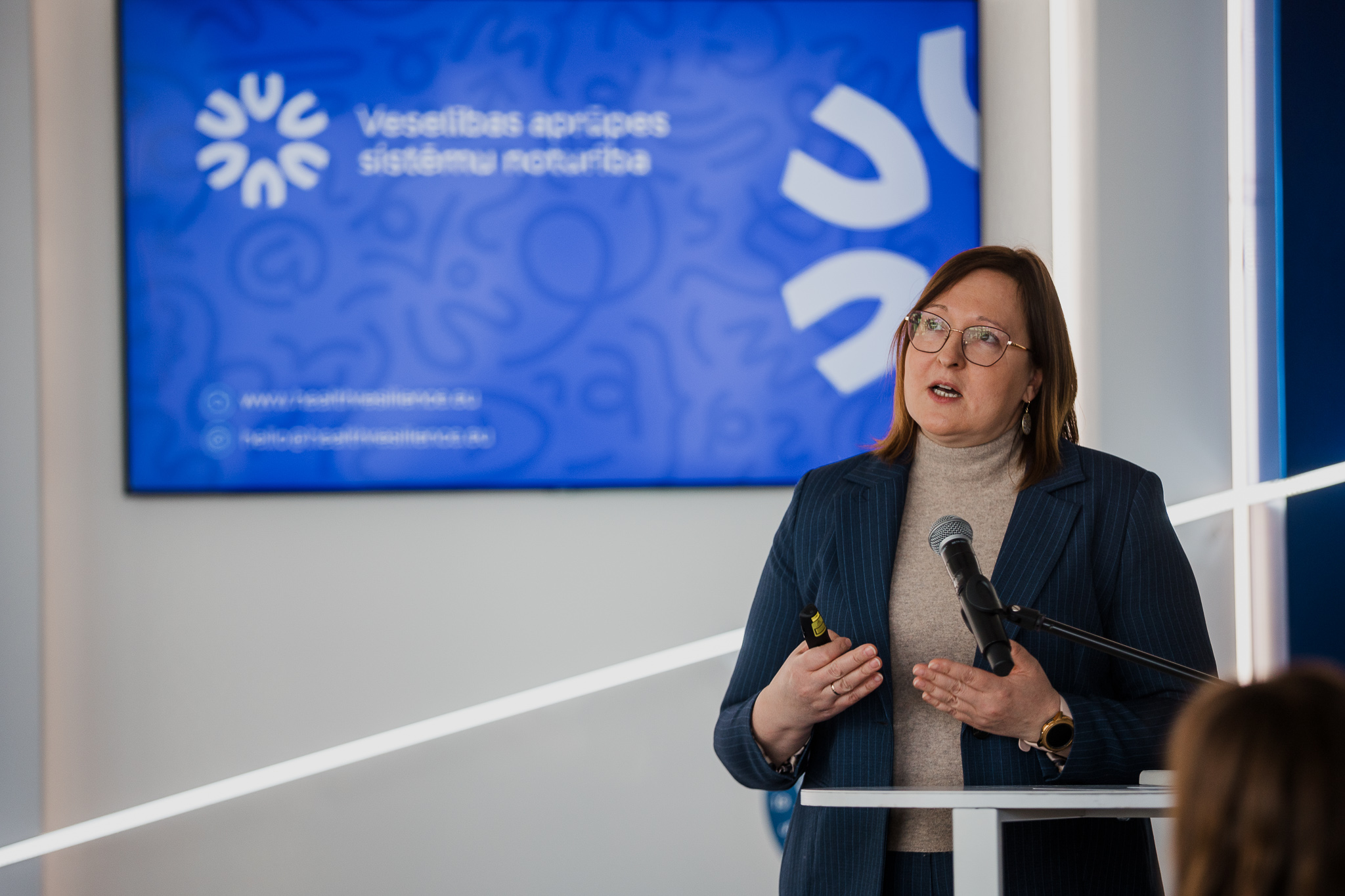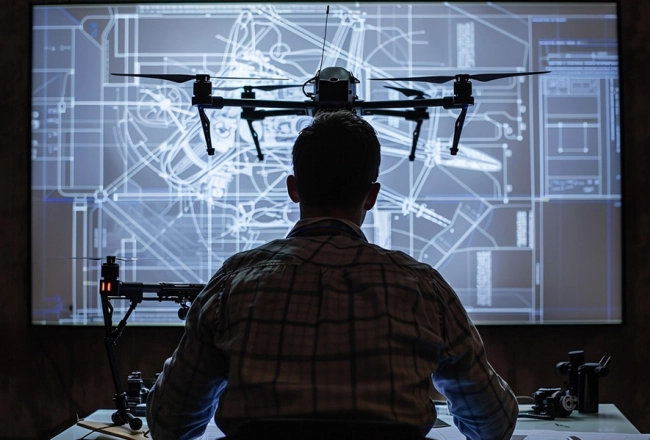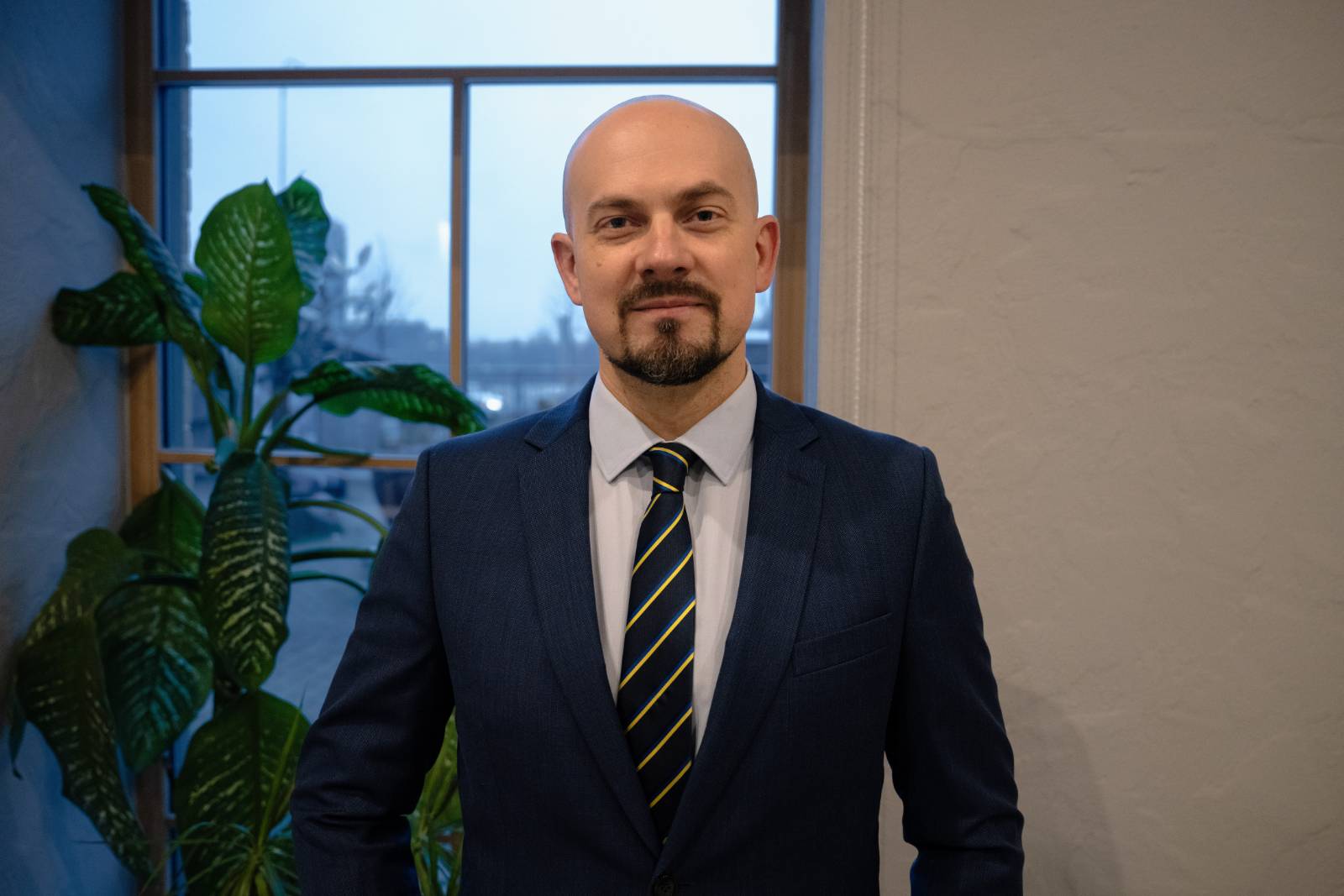10.03.2025
Emergency Medical Service Director Liene Cipule tells Pēteris Apinis about what she witnessed and experienced in Ukraine

Emergency Medical Service (NMPD) Director Liene Cipule is a Grand Cross of the Order of Recognition. Liene Cipule has been head of the NMPD since 2018, but her achievements during the COVID-19 pandemic have been particularly noteworthy. For medical professionals, the COVID-19 pandemic meant saving and treating patients in extremely challenging and unprecedented circumstances. The NMPD faced a series of completely new processes and their implementation in everyday work, which required the ability to find solutions to problems in very complex situations.
Liene Cipule has been the manager of SIA “Klīnika Diamed” and has worked at the Riga Health Centre, the Latvian Medical Association and Sigulda Hospital. She has been Parliamentary Secretary of the Ministry of Health. The director of the NMPD has a degree in physiotherapy, as well as a master’s degree in health sciences in health care and a master’s degree in social sciences in public administration.
Liene Cipule, as head of the Emergency Medical Service, is also responsible for disaster medicine planning. Civil-military cooperation is important in this regard, namely direct cooperation with the National Armed Forces and the National Guard. The NMPD has been working with military medics for many years. In addition, disaster medicine also means hospital preparedness.
In December, Liene Cipule visited several hospitals in Ukraine, including a hospital that was under siege for 42 days and was constantly bombarded. In February, she returned to Ukraine to study the process of assisting and evacuating patients from the front line in the O zone to the hospital.
NATO doctrine discusses the time it takes to get victims to first aid, medical support, and a hospital. This is a long time, and the experience of the war in Ukraine shows that this time is getting longer. The war has changed, and medics have to work under drones. Victims, rescuers and medics are all watched by the “invisible eye of Big Brother.”
Drones are very well recognized on the front lines. They include reconnaissance drones, attack drones, “mother drones” that control other drones, drones that distract attention, and 10-12 other types of drones flying in the air. The presence of these drones forces decisions to be made on how to extract wounded soldiers as safely as possible. Modern warfare often looks like a computer game from a bird’s eye view, but real people are dying on the battlefield. There are no large forests in the Ukrainian war zone, only vast steppes. To get from the front line, you have to carry out diversionary maneuvers, diverting drones to other movements so that the wounded can be quickly evacuated. Sometimes these diversionary maneuvers take hours.
Of course, there are now robots (unfortunately quite slow) that help victims get out of the front line, but you still need a person to help them get onto the vehicle. There is always someone else at risk when rescuing a victim. Victims are also taken out of the front line on motorcycles with stretchers attached.
Carrying victims out of the front line is still practiced, but it is an extremely risky undertaking.
Drones have changed attitudes towards the possible location of medical points in tents. Now, such medical tents are quickly spotted by drones and bombed. The Hague Convention and the Geneva Convention do not apply to Russian soldiers, and Russian military personnel have bombed hundreds of hospitals. Medical personnel are the most endangered on the battlefield, with Russian soldiers shooting Ukrainian medics first and killing them.
Patients are pulled from the front line and taken to tunnels covered with nets. From there, military medics come to pick up the patients and take them to a relatively safe zone 20 kilometers away.
There is an intermediate zone in Ukraine that operates within a 20-kilometer radius. This is where the hospital is located, which is more of a logistics center where the wounded are gathered for nighttime evacuation. It is similar to a trauma center with forty beds, where patients can stay for up to five days.
One hundred kilometers away are civilian brigades that go into these 20-kilometer hospitals and take the sick to more distant hospitals. There are also resuscitation brigades that transport particularly seriously ill patients.
A bomb exploded next to the Chernihiv hospital, completely shattering all the windows. The hospital was located on the outskirts of the city. The city was blockaded – fighting was taking place all around the city, and trenches were dug across the street from the hospital. The hospital was bombed, and the street wing had to be completely cleared of patients because it was under constant fire. The surgical wing was located inside, it had no windows, often no light or electricity, but work continued.
Based on the experience of the Chernihiv hospital, we have now started testing Latvian hospitals.
Liene Cipule does not work at the NMPD, she lives there. Liene has been studying her whole life. She has now traveled twice to Ukraine to study and gain experience. The first time she went to hospitals, the second time to military medical facilities close to the front line.
Liene Cipule made the trip to Ukraine as a driver in a convoy organized by Ogre Mayor Egils Helmanis to Kiev – alone behind the wheel.
It is not so easy to get to the front line, to medical facilities close to the front. There are no tourist buses taking people to eastern Ukraine. But traveling in a convoy is an opportunity. The mayor of Ogre, with his many contacts, has established connections and gained trust, which has allowed Liene Cipule to reach the medical services on the Ukrainian front.
Getting to the front is not only a matter of personal desire and courage, but also a great responsibility on the part of the Ukrainian commanders who allowed Liene Cipule to be there, because it is a real danger. Of course, Liene had no communication near the front, but it was an opportunity to see the process of rescuing the wounded. Ukrainians are not always willing to talk about the challenges they face, both because they are proud and because they are not allowed to tell everything.
Medical services are very vulnerable in modern warfare. The Russian army does not respect the Geneva Convention and bombs buildings and cars with red crosses, which is why Ukrainians no longer use the red cross symbol. Ukrainian medics wear military uniforms, and it is not emphasized that they are medics. Medics are equipped with protective vests and helmets. However, Ukrainian medics are quite confident, working in uniform within a 20-kilometer zone, but only wearing protective vests and helmets within a 5-kilometer zone.
Cars are equipped with nets to make them as inconspicuous as possible. Hospitals are threatened by both drones and rocket attacks. Of course, we know how the children’s cancer hospital and the maternity hospital in Mariupol were bombed, but more than 100 medical facilities have been completely destroyed. For example, drones fly constantly in Slavyansk, and no one knows where they will strike or what they will destroy. However, medics do not wear vests because it is much harder to work with them on.
This is the reality we have to deal with when planning our system.
After each attack, a cascade of defenses must be put in place to sort the wounded; it is not possible to evacuate everyone at once, so we have to wait for a safe corridor. Drones also fly twenty kilometers beyond the front line. In previous wars, the zone 5 to 20 kilometers from the front line was relatively safe, but this is no longer the case. Therefore, everything is determined by when the military allows medics to enter the zone and bring out the wounded, but this does not guarantee that everything will go well. A Russian drone can hover over a casualty for 12 hours and wait for the next one (rescuer) to arrive. Drones drop explosives on vehicles and people, but especially often on medical transport. In fact, at the beginning of the war, there was no drone warfare, but this has changed during the war. Both sides are learning to intercept, land and disable drones – one of these disabled drones ended up in Gaigalava. However, more modern drones, which are controlled by optical cables, can no longer be reached by technical means.
In Latvia, there is very little training in situations involving the “pick up and carry” principle. Liene Cipule had to work with a nurse on the front line, with a driver at the wheel, taking a primitive kit of medicines and bandages to the field for pain relief and immobilization. The gold standard is to give the wounded large doses of antibiotics immediately.
There are also well-equipped teams. We must not forget that heart attacks and strokes have not been cancelled in the war zone; people with somatic illnesses must also be saved. In Ukraine, high-level resuscitation teams are also working near the front line, equipped similarly to NMPD teams in Latvia. However, most of the teams are relatively poorly equipped, as most of the injuries are to the legs and arms from drones or mines.
Unfortunately, not all of the wounded make it to hospital, and those with abdominal and head injuries have very little chance of surviving on the front line.
We need to work on determination and motivation, we need to work on protecting hospitals and medical facilities, and we need to think about alternatives – even if it means operating underground or rescuing people underground in the logistics chain – in order to save as many people as possible.
Pēteris Apinis: I really think that Liene Cipule is a true pride of Latvia.



